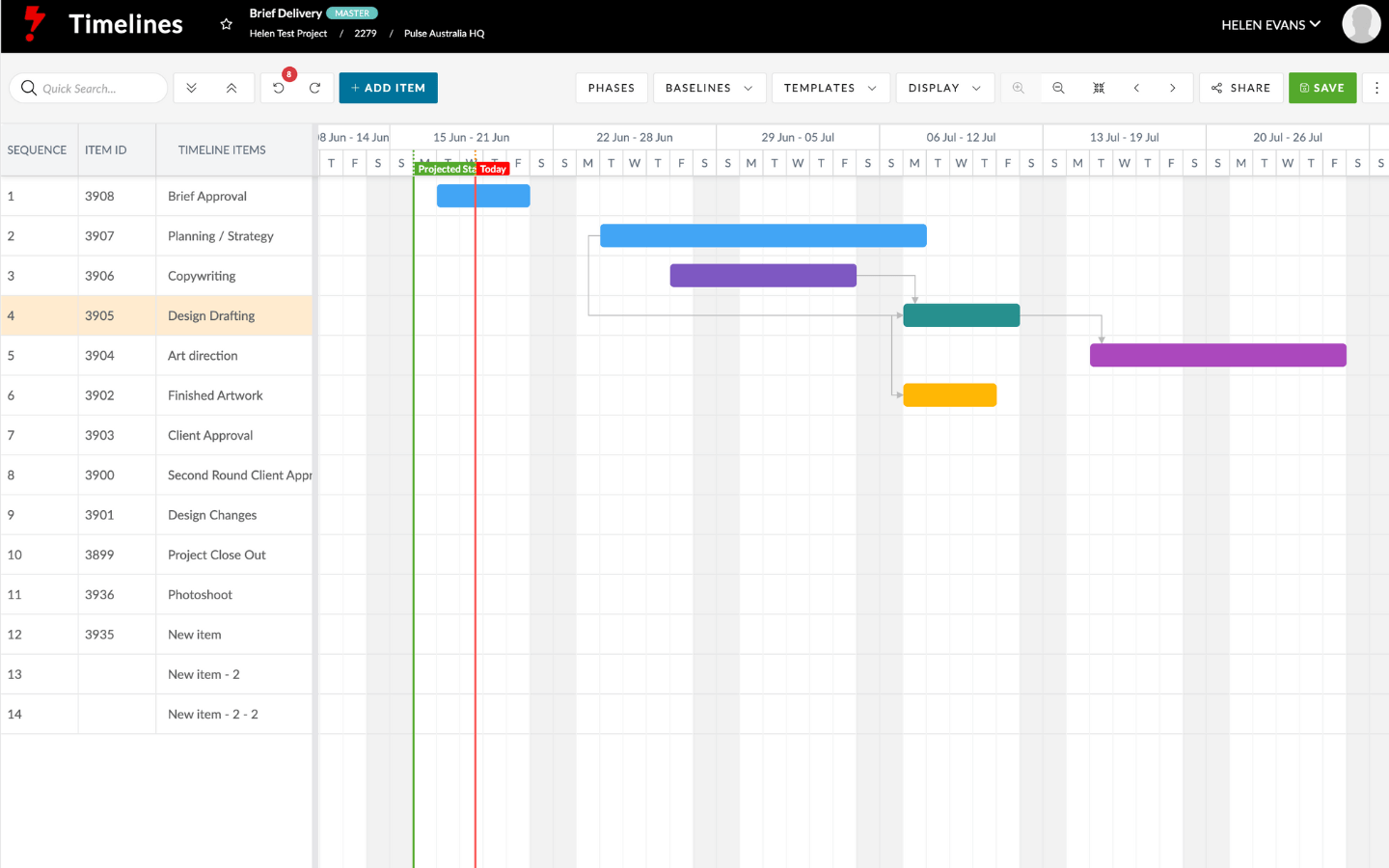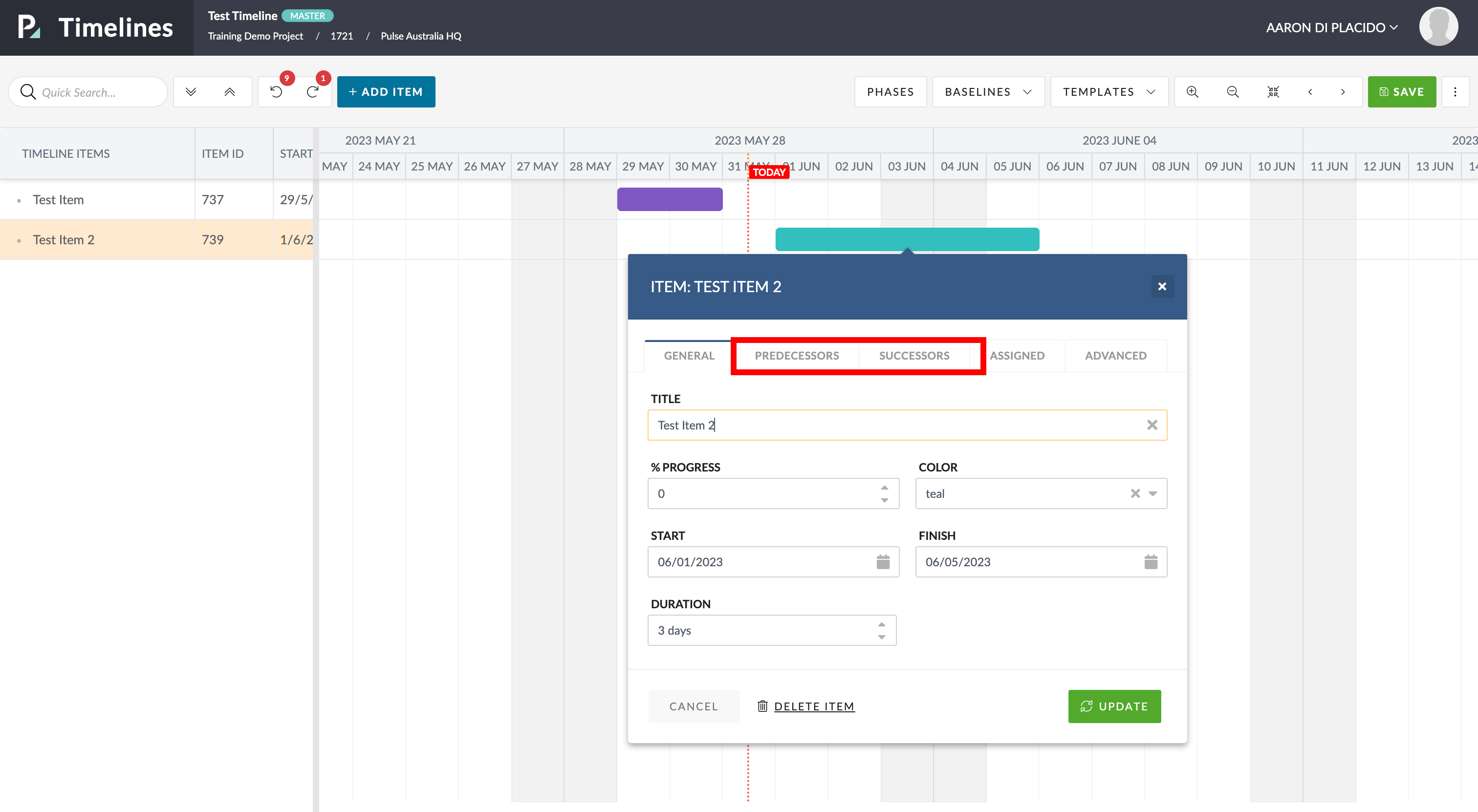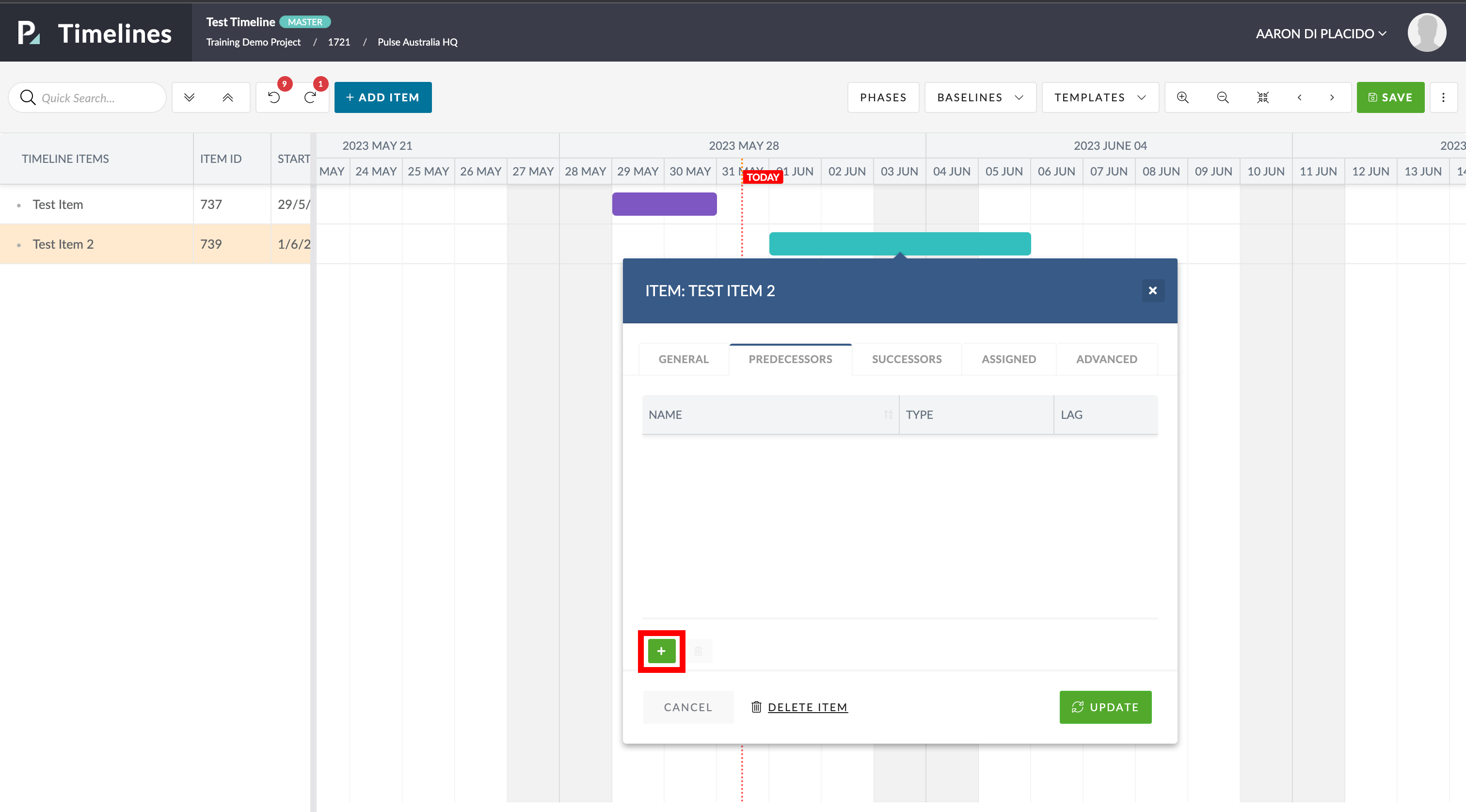What are Predecessors & Successors?
Predecessors help you build out project timelines by defining relationships between Tasks — so when one Task changes, the others update automatically.
- A Predecessor controls when its linked Successor can start or finish
- A Successor depends on the schedule of its Predecessor
This helps you build logical, connected Timelines, especially for complex projects.

How to Create Predecessor / Successor Links
1. Create Predecessor from the Gnatt:
1) Drag to Connect
- Drag from one edge of a Timeline Item to another to create a direct link
- The system will automatically assign the correct relationship
2) Fine-Tune with Double-Click
- Double-click a Timeline Item to open the side panel
- Go to the Predecessors/Successors tab
- Click the green + button to add a link
- Click Update to save the relationship


2. Create Predecessor from the Table:
1. Add Durations First
To use Predecessors, Tasks must have durations.
- In the Timeline, enter a duration for the first Task.
- It will appear on the Gantt from the project start date.
2. Create Predecessors via the Column
- In the Predecessor column for a Task, type the row number of the Task it depends on.
- Hit Enter — this automatically links the two Tasks and moves your cursor to the next row.
- Repeat to build a chain of dependencies quickly, without using drag-and-drop.
3. Change Durations and See the Impact
- Update the duration of an early Task (e.g. change from 1d to 3d).
- All dependent Tasks will shift forward automatically.
Use Undo to revert and see the timeline reset.
4. Add Multiple Dependencies
- In the Predecessor column, separate multiple row numbers with a semicolon (e.g.
3;4). - The Task will now depend on all listed Tasks.
- Changing any of the upstream Tasks will impact this Task’s schedule.
5. Break a Predecessor Relationship
If you manually override a Task’s start date:
- Either edit the start date directly or drag the Task on the Gantt.
- A warning will appear — confirming that this breaks the Predecessor relationship.
- Click Proceed to break the link.
Note: You can break links from either the Predecessor column or the Gantt.
6. Set Dependency Types
By default, Predecessors are Finish to Start (FS) — the most common type.
You can also manually enter other dependency types:
3FF→ Finish to Finish3SF→ Start to Finish3FS→ Finish to Start (default; can be left as just3)
These change how the timing between Tasks is calculated.
7. Add Lag Time
Lag time lets you insert a delay between dependent Tasks.
- After the dependency, type
+X(e.g.3+4) to add a lag of 4 days. - The dependent Task will now start 4 days after its predecessor finishes.
Summary
The Predecessor column is a fast, powerful way to control your project timeline:
- Quickly build and link Tasks
- Handle complex dependencies
- Adjust timing without touching the Gantt
Use it to keep your Projects running smoothly — with all dates staying in sync.

